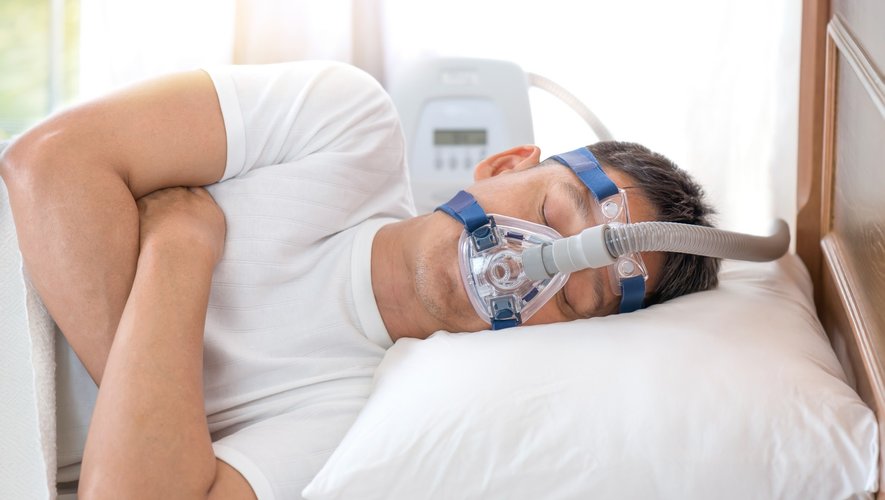Do you usually snore? Maybe you suffer from sleep apnea. This syndrome affects about 4% of the population in France. What is it exactly? What to do if you are concerned?
“Sleep apnea or obstructive sleep apnea-hypopnea syndrome (OSAS) is a nocturnal ventilation disorder due to the abnormally frequent occurrence of respiratory pauses”, defines the site of the Medicare. Indeed, during sleep, the airways become clogged by episodes, causing punctual and repeated apneas. “This phenomenon is due to the relaxation of the muscles of the walls of the pharynx”explains Inserm. “It becomes soft and the air passes with difficulty, causing the passage of vibrations which create a snoring. If the walls collapse completely, the passage of the air is blocked and it is apnea.”
In each episode, “an alert system is triggered in the brain, causing a micro-awakening which itself allows the activation of a reflex neurological system”. The person experiences a micro-awakening, which he does not realize, allowing him to resume his breathing…until the next obstruction. These apneas usually last between 10 and 30 seconds and occur at least 5 times per hour of sleep.
This sleep disorder is favored by several factors, the main one being overweight and obesity. Nasal obstruction, a consequence of ENT problems can also cause them. Alcohol, sedatives and tobacco make the problem worse.
Consequences for health and quality of life
This lack of oxygen and these repeated micro-awakenings also disturb the quality of life during the day. As sleep is degraded, fatigue sets in, leading to daytime sleepiness. This results in memory and concentration disorders, mood disorders and an increased risk of road accidents in particular. The quality of social and professional life is also altered.
Moreover, and in the longer term, “Sleep apnea syndrome increases mortality, particularly that of cardiovascular causes”, says ameli.fr. Arterial hypertension, heart failure, stroke or even myocardial infarction… the risk of suffering one or other of these pathologies is significantly increased in the context of OSAS. “Nearly 40% of people with hypertension also have sleep apnea syndrome”specifies for example the French Federation of Cardiology.
Diagnosis and treatment
In order to make an accurate diagnosis, it is necessary to carry out sleep recordings in a specialized center or at the patient’s home. Once confirmed, “and when the disorder is associated with being overweight, the first step is to lose weight”says Inserm. “A reduction of 10 to 15% (of) the initial weight clearly reduces the severity of sleep apnea.”
“Beyond this measure, continuous positive pressure ventilation is the reference treatment for the syndrome”continues Inserm. “It is based on the administration of air in continuous pressure during the night, to avoid the closure of the pharynx.” This method consists of wearing a mask connected to a ventilation machine during the night.
In some cases, an oral orthosis can also be fitted. “It is a removable device, molded on the jaws of the patient, which is worn at night and allows the jaw to be advanced a few millimeters to stretch the pharynx. This approach is generally reserved for moderate apneas”specifies Inserm.
To note : This syndrome affects nearly 2% of children between the ages of two and six, most often due to large tonsils and adenoids that obstruct their airways. In these cases, surgical removal is often indicated.

